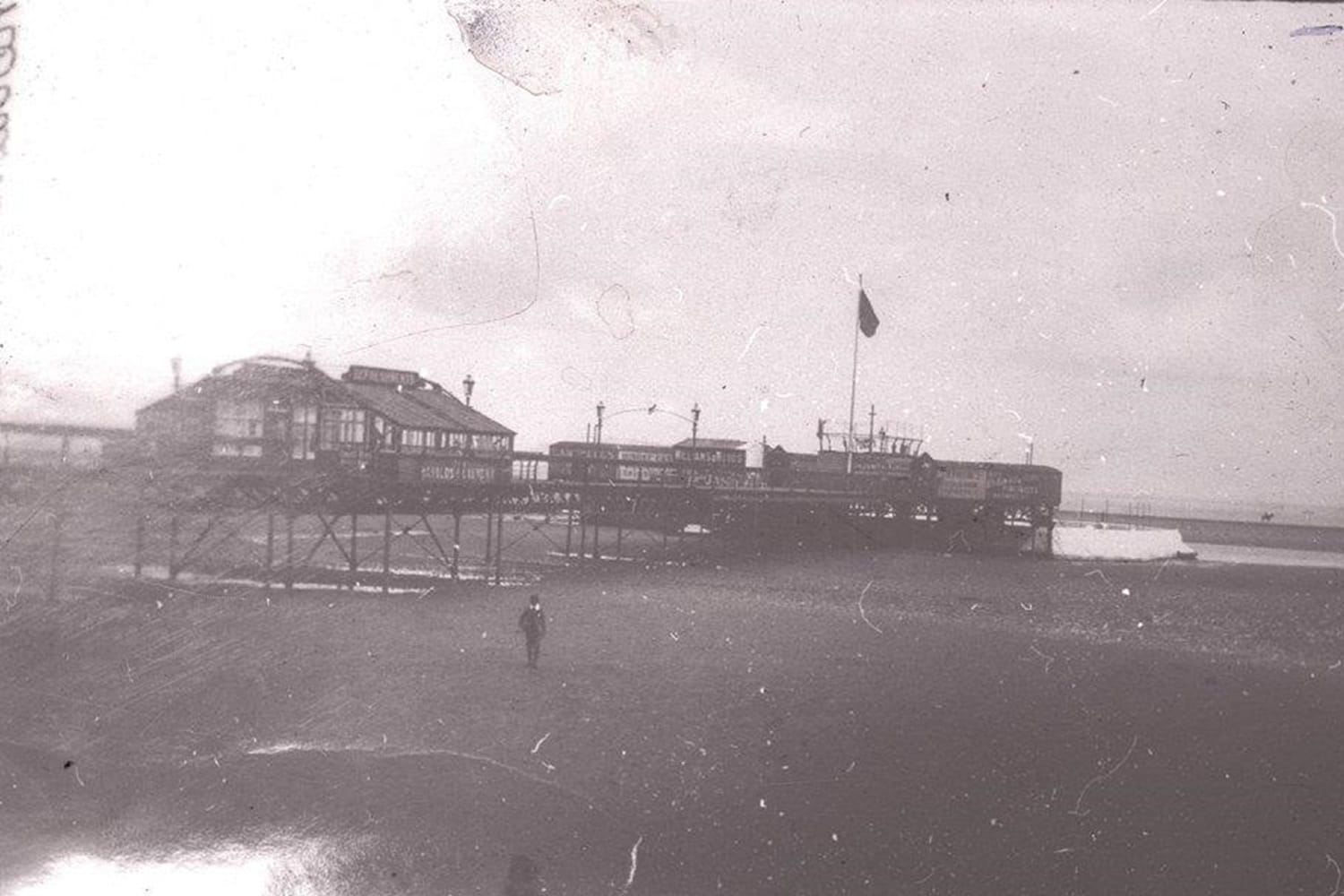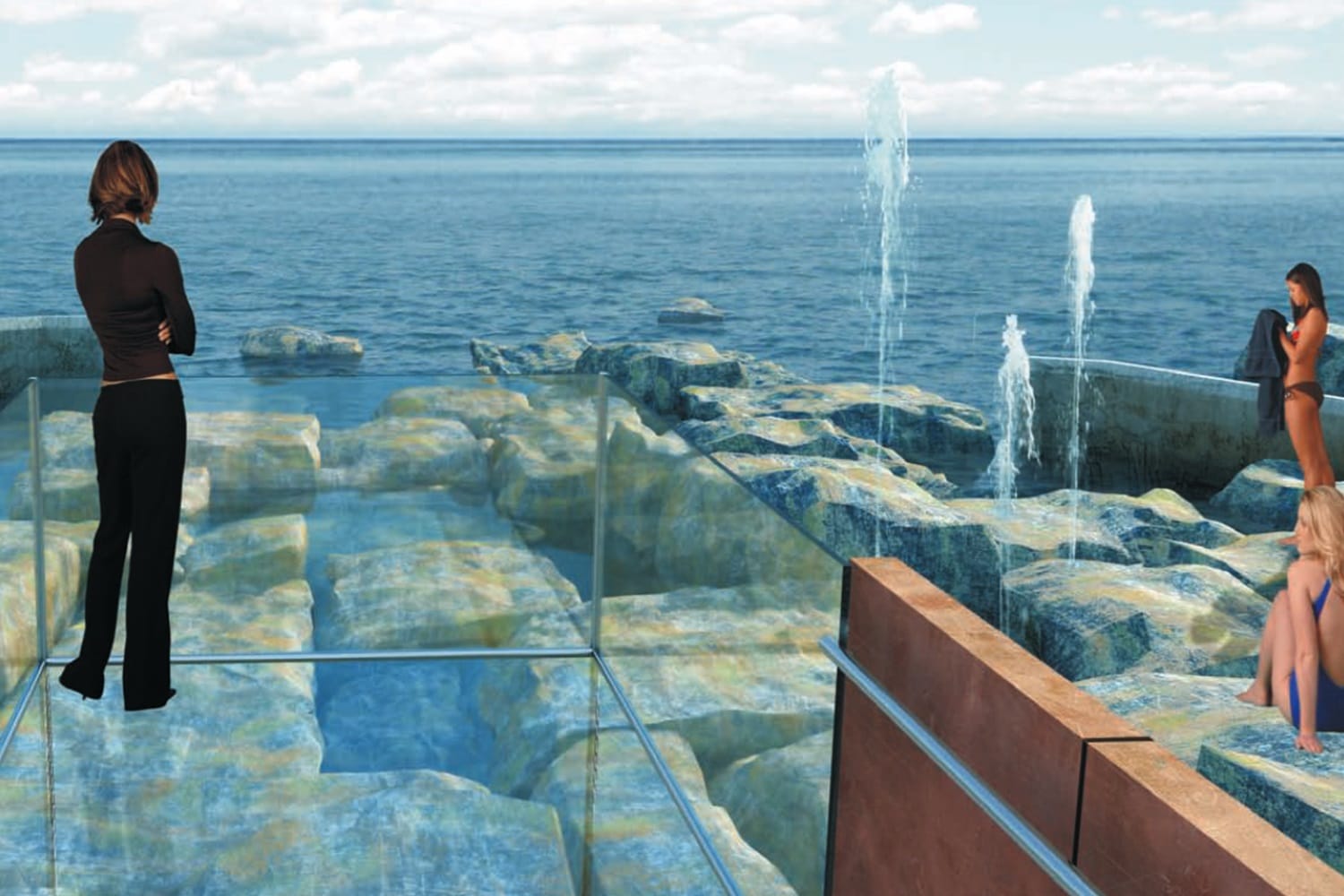What’s the best way to tell area residents about plans for a new asylum shelter nearby?
The government should tell communities directly about plans for new asylum shelters, some activists and politicians say.
An architect’s drawn up plans, and a councillor has tabled a motion – but it’s unclear if the council is interested.

Two teenage girls and a boy marched along Sandymount Beach at lunchtime on Monday, passing a woman quietly sunbathing on the dry sands below the grassy bank and vacant Martello tower.
The trio headed towards the sea, stopping once they reached the old crumbling Sandymount baths almost 100 metres away.
Tide was out, and the boy skimmed some stones across a shallow pool of water beside one of the bath’s concrete walls.
The two girls clambered over a piece of the wall that had broken off. From the other side, one shrieked: “My feet are soaked!”
Forty metres long, and 40 wide, the bath is split into two: one side historically for male bathers, the other for women.
The wall facing east, overlooking the Irish Sea is curved slightly and has fallen away in some parts.
Inside and out, the walls are heavily graffitied. There are tags and characters, including one black and white figure by the Dublin-based Brazilian street artist Neto Vettorello.
Besides acting as a hang-out spot, the baths don’t fulfil any other purpose today. They haven’t been used in living memory, says local architect John O’Neill, of John O’Neill and Associates. “Not in my lifetime. It goes way back to the Victorian era.”

Now, O’Neill is revisiting an idea he has been stewing on for two decades. He wants to revive the baths and once more make them a feature on the strand.
The council should take a serious look at that, says Labour Councillor Dermot Lacey. “Because imagine if you could go back out to the baths in the summer, and have a swim?”
Dublin City Council didn’t respond to queries about whether they were considering repairing the baths, or looking at proposals for their revival.
John O’Neill arrived at his architecture practice on Irishtown Road just after 12pm on Monday.
His day was headed from calm to hectic. His partners were in the midst of a planning application, he said. “We do have some days like this that we wish we didn’t have.”
But, while he had a few moments to spare, he pulled up a presentation on his computer, outlining his vision for the rejuvenation of the Sandymount Baths.
A lifelong resident of the Irishtown-Sandymount area, O’Neill says it frustrates him that the dereliction of the baths has become just another feature of the beach. “It’s something you get used to.”
It has been more than 100 years since the baths were used as intended.
The Sandymount Baths, originally known as the Merrion Promenade, Pier and Baths were opened in July 1883, and designed by an engineer, Frederick Morley, according the Dublin Evening Mail.
Construction was surprisingly fast, the Mail reported. Morley had signed the construction contract with the Earl of Pembroke the previous December.
The men’s bath was 120 ft by 80 ft, while the women’s was smaller, at 120 ft by 40 ft, according to the Mail. Linking them to the coastal Strand Road was a pier, 350 ft long, with a bandstand, refreshments, and a reading room with periodicals.
But, by February 1899, the company behind the baths, The Merrion Pier and Baths Company Limited, had gone into liquidation, according to the Mail.
And, after a section of the baths’ walls collapsed in 1920, the whole structure was closed down, says a 2017 heritage report by Lotts Architecture and Urbanism.
O’Neill’s proposal for the old baths popped up on his computer screen, with the project titled “The Tidal Theatre”.
His idea revives the pier. Images show a rusted walkway over to the baths, propped up by large uneven cement blocks.
“It’s a nod towards the history,” he says.

For the baths, O’Neill says, his main plan would be to reinstate the old walls. “And then fill the inside with large boulders.”
In one design image, a glass balcony at the end of the pier overlooks the baths below.
In a mock-up, the baths are filled with boulders. Seawater flows between them.
Some have water shooting out of them, like fountains. This would occur as the seawater rises at high tide, he says.
“Underneath the boulders are these tanks, which would catch the incoming tide and then the water is pushed up between the cracks,” he says.
O’Neill says he wants to embrace the tide in the design. “A phenomenon that occurs when you live around here is you become very aware of the tide, and how the bay changes radically, depending on the time of day.”
It becomes a play thing for people who venture out to the baths, he says. “And from a distance, it becomes a feature on the prom.”
O’Neill first floated his idea for the baths to local councillors like Labour’s Dermot Lacey in the 1990s and early 2000s, he says. “And we were enthusiastic, but we all got distracted.”
Lacey got to thinking about them again recently, he said.
The Labour councillor had been down by the baths late in April, he says. “Two things struck me. One was how beautiful they were, and secondly was how potentially dangerous they are if we don’t do something with them soon.”
On 13 May, he tabled a motion at a meeting of the South East Area Committee asking councillors to agree to initiate a competition to explore the possible use for the baths, and to initiate contact with the owners of the vacant neighbouring Martello Tower.
The Parks Department had arranged a meeting with O’Neill, said Fine Gael Councillor James Geoghegan at the meeting.
The council did not give any indication that they have plans to hold a competition for a redesign or revival of the baths, Lacey said after the meeting. So the motion has been put back on the agenda for a future committee meeting.
The Parks Department’s perspective is that the baths should be progressed as part of a bigger plan for the Sandymount area, O’Neill said on Monday after the meeting. “They think it needs to be done as part of a whole view of the bay.”
Sandymount Strand does have a number of issues that currently need solving, Lacey says. “We need to try and do something with the old Martello Tower, and do something with the baths, and make it clean and safe to swim in again.”
Based on a four-year running average of tests, bathing water quality at Sandymount Strand is classed as “poor” this year. There’s a bathing prohibition in place this season.
Dublin Bay is a great potential asset for the city, Lacey says. “I suppose it’s not being treated that way.”
It highlights the need for the Dublin Bay Bill 2021 to be passed, he says.
Proposed by Labour leader Ivana Bacik, the bill seeks to put a statutory framework in place that can protect the coastal environment, regulate pollution, and co-ordinate all public bodies responsible for the bay, according to Bacik’s website.
One statutory body should be responsible for the bay, Lacey says. “You have the three councils, the Dublin Port Company, Dublin Docklands, Department of the Marine, Department of the Environment, and the Office of Public Works, and none of that makes sense.”
Doing it up as part of a plan for the whole bay doesn’t inspire hope in O’Neill, he says as he sits in his office. “That’s a bit of a cop-out. If it needs to be a part of the whole bay and the prom, that’s not going to happen.”
He points to the pictures on his computer screen. “This could happen, quite naturally on its own,” he says.
Get our latest headlines in one of them, and recommendations for things to do in Dublin in the other.